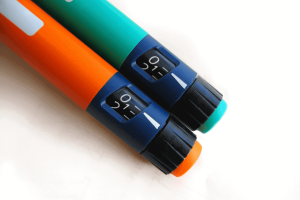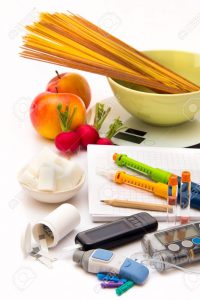How Keeping a Food Journal Can Help You Achieve Your Goals
Close your eyes for a second, and think about what you’ve eaten today.
If you’re like most people, your mind will automatically jump to breakfast, lunch, and dinner. But what about that handful of M&Ms you snagged from the dish on your co-worker’s desk this morning? And did you remember to include the couple pieces of cheese you munched on while you prepped dinner?
According to a study published in the British Medical Journal, Americans estimate they eat around 170 calories less per meal than they actually do. That can add up to more than 510 calories a day, or one extra pound of fat every six weeks. And this doesn’t even include snacking!
So, what’s the solution? The key is mindfulness, or paying attention to the world around you. (In this case, that world is food.) Studies have shown that keeping a food diary can not only help you lose weight but also better control your blood sugar levels. That’s because you’re paying more attention to what goes in your body.
Here’s how to get started!
Find your journal.
There’s more that goes into a food diary than you might think. For example, you can log your meals online or with a paper and pencil. Don’t like juggling too many notebooks around? There are ways to combine your blood sugar log and your food diary. Some have calorie and nutrition counters, while others are simply divided into meals and snacks. Give a couple a try, and see what works best for your lifestyle. There are a variety of free ones online. Take a look at MyPlate, MyFitnessPal, or FitDay.
Track your foods–in real time.
You may think you’ll remember to log that diet cola later, but the truth is, most people probably won’t. For the most accurate results, write down your foods as soon as you eat them. If it helps, try writing down the time you eat next to the food.
Make notes.
Of course you’ll be writing down the foods you eat, but try to jot down a couple notes about why you’re eating in the margins. You may find out that you eat more often than when you’re simply hungry. Often times, we reach for a snack when we’re stressed, tired, or even just bored. People often get hunger confused with thirst, too. The next time you get the munchies, try this little trick: Drink one medium-sized (six-ounce) cup of water and wait 20 minutes. If your stomach is still growling, it’s time for a snack.
Review and reflect.
Flip through your diary after a few weeks of logging. Make sure to look for trends that stand out in things such as when you eat, what you eat, and why you eat. You might be surprised to find that your eating patterns are much more predictable than you thought.
If weight loss or a healthier diet is your goal, show your food diary to your health care provider. Your doctor will be able to go through your eating trends with you to help you pinpoint specific areas you can work on.
Summary
Losing weight or keeping your blood sugar levels under control may be difficult. But, there are a few ways to keep what you eat in check: grab a journal, take note of what you are eating/drinking and when. Finally, reflect on what you have written after a few weeks. Keeping track of what you consume will help you better understand what your body truly needs and when it needs it!
Disclaimer Statement: This is for educational purposes only and not intended as medical advice. For individual medical advice, contact your healthcare practitioner.




